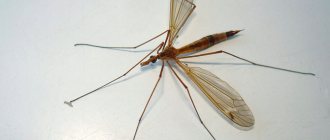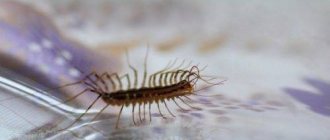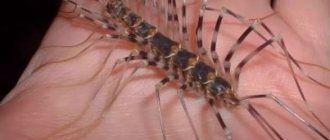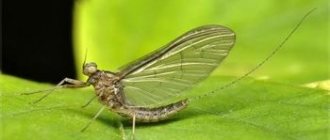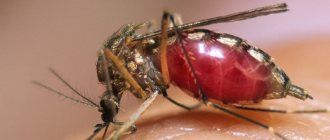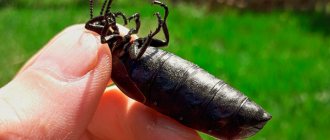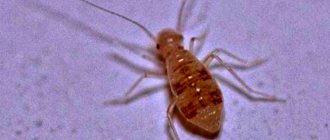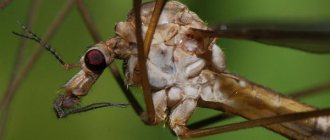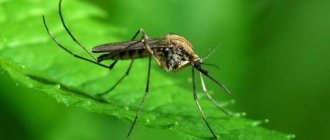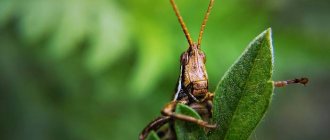Long-legged mosquitoes (karamora) are the indigenous inhabitants of nature in the middle zone and beyond. They can be found all over the globe. The family of these insects includes several thousand species. You can meet a clumsy centipede with long legs both in the European part of Russia and in Siberia, the Far East, the Urals, throughout the entire length of Ukraine and Belarus. It’s easier to say where these creatures don’t live.
Representatives have an unpleasant, intimidating appearance and quite respectable size.
And given that they are called mosquitoes, many believe that these insects also bite. Does a lamp help against mosquitoes?
Does a lamp help against mosquitoes?
Review of popular models, rating, operating principle. Is it worth taking?
netkomaram.ru
Open ›
In fact, it turns out that the centipede mosquito gathers around itself more myths than truth. Next we will talk about these strange and unpleasant-looking inhabitants of forests, meadows and vegetable gardens.
Who are long-legged mosquitoes?
Long-legged mosquitoes are long-standing inhabitants of the globe. The first traces of these insects were found in formations of the Late Jurassic period. According to paleontologists, the family is at least one and a half hundred million years old, which makes them one of the most ancient creatures on the planet.
These insects are well known not only to mushroom pickers and summer residents, but also to native city dwellers. They appear outside with the first warming. They actively fly into the light, entering apartments through open windows and terrifying the inhabitants of the home with their long legs and impressive size.
Karamors are close relatives of pesky bloodsuckers, as well as flies, which makes assumptions about the danger quite understandable. But in reality this is not the case.
Go to website
Despite their complex visual apparatus, insects have poor vision. Focus on light and movement. Hence the strange behavior after getting into the apartment. They cannot navigate normally in a closed space. People don't interest them at all.
You will be interested to know about:
- what diseases mosquitoes carry;
- Why are some people bitten by mosquitoes more often than others?
There are more than 4,000 species of long-legged mosquitoes. In Russia, Ukraine and the central zone as a whole, two large subspecies predominate. Actually, centipedes are large brown insects. And also black swampworts, somewhat smaller than their counterparts.
Both species prefer to settle in forests, damp lowlands, near water bodies, which reflects the nature of their feeding and reproduction.
How long do they live?
Karamora becomes more active from July to August. To lay eggs, the insect uses soil with high humidity or foliage. The centipede lays eggs of various sizes, which are covered with a dense shell. If the temperature and humidity are maintained at an acceptable level, then after 14 days, larvae and pupae appear. Adults emerge after 25–30 days. In some cases, the development period from egg to adult takes 11 months.
The centipede is an amazing insect that differs from all other types of mosquitoes. After all, it feeds only on plant nectar, which contains all the necessary nutrients.
Appearance Features
As mentioned, the Karamora mosquito (another name that is not used as often) has several thousand subspecies. Without going into taxonomic features, we can distinguish two main varieties of these insects, which were already mentioned above. They are the ones most often found in people's homes and areas.
centipedes
- The sizes of representatives vary from 4 to 6 centimeters. Larger representatives are extremely rare. Interestingly, members of the family also live in tropical countries. The size of individuals is rarely less than 10 centimeters and these are the largest individuals of the family on the entire planet.
- All centipedes have long, awkward legs that are longer than the body itself and have several joints. They are mainly used for support. The individual is capable of walking on them, but does it extremely reluctantly. They also have another task - a distracting one. An insect can deftly throw off a limb and remain alive when attacked by a bird or other predator - dragonfly, etc.
- Representatives of the family are guided by light, but see very poorly. In addition, they have a developed tactile apparatus, which is represented by antennae in the upper part of the head.
- It has large wings with dark edging and speckles. When flying, it creates a specific squeak. May get stuck in one place.
- The body is segmented. The color varies and depends on the specific subspecies. The most common species are dark brown, light sand and orange.
- The oral apparatus is represented by a sucking proboscis. However, it is not intended for puncture. Because of this feature, mosquitoes are unable to bite.
- The back of the abdomen ends with the reproductive organs. In the male it is round and has a spherical appearance. The female has a pointed one. However, this is not a stinger, but an ovipositor.
Interesting facts: Why are mosquitoes needed and are they beneficial?
Swamps (meadows)
Strictly speaking, these are not exactly centipedes, but rather their close relatives. But they have a similar structure and identical lifestyle. They differ from their relatives in their smaller size, not so long legs, and black coloring. If centipedes sit with their wings spread, swampworts prefer to fold them in one line. Otherwise, there are no significant external differences.
Interestingly, there are much more swampweeds or limoniides than caramores. There are almost three times as many subspecies, about 11 thousand.
Large insects
This is not the first time Zhao has caught a huge insect. Not long ago, a researcher discovered the largest insect in the world - a female stick insect 64 cm long.
Finding unusually large creatures requires knowledge and luck.
“You can only find them if you are familiar with the possible environments of giant insects,” Zhao said.
He explored every province of China and numerous places in Asia, including Thailand, Vietnam, Indonesia, in search of interesting creatures.
More than 800 species of large mosquitoes have been found in China, 100 of them in Sichuan province, Zhao said, which is home to thousands of species of small mosquitoes.
By Louise Moon
Habitat
It’s hard to say where centipedes live. It's easier to say where these creatures don't live. Giant mosquitoes thrive all over the planet. They can be found both in central Russia, the black earth regions of Ukraine, the steppe zone of Kazakhstan, and in tropical forests. They have conquered the whole world. They are not found except in extremely dry areas (deserts), as well as in very cold regions of the planet (Arctic, Antarctic).
The habitat is as wide as possible. Representatives of the family prefer damp, moderately warm places. A real haven for long-legged mosquitoes is swampy areas, forests with abundant smoldering, decaying leaf cover. Natural habitats are not the only option. For lack of a better place, mosquitoes can easily make their home in garden beds or improvised flower beds within the city. They have amazing adaptability, which has developed over millions of years of development.
Features of habitats dictate the characteristics and nature of nutrition, daily activity and lifestyle of adult individuals. And this is where most of the myths about these insects lie.
Where does the giant with long legs live?
Large mosquitoes are found on many continents. The only exception is Antarctica. The climate on this continent is not suitable for reproduction and existence. People who live in Russia know exactly what kind of insects large mosquitoes are and how they differ from mosquitoes.
Large mosquitoes live:
- Near swamps and ponds with standing water.
- In forest areas.
- In dense bushes.
When selecting a place for existence and reproduction, the caramora chooses those places where the humidity level is quite high. At the same time, the centipede hides from the sun's rays. Such insects are never found in places where there are no ponds or other sources of water. This is because they require moisture for normal development.
To lay eggs, the caramora selects areas with moist soil or fresh foliage. After all, larvae and pupae require moisture for normal development. If there is no access to water or moisture, then the development period can increase significantly.
Nutritional features, preferred diet
Oddly enough, long-legged mosquitoes are vegetarians. In the sense that they do not need blood for the development of offspring, neither females nor, especially, fertilized males. The diet of an adult insect consists of two components:
- Plant nectar. Representatives of both sexes feed on it. Nectar is collected like butterflies and others.
- Water. For drinking, dew is used, which individuals absorb through the proboscis.
Centipede mosquito larvae are no less vegetarian than their parents. They prefer to consume the products of rotting plants. But in the absence of other options, they can snack on the roots of growing shrubs and forest crops. It is noteworthy that different species prefer different fruits, vegetables and other crops in the early period of life. All of them are quite dangerous, because they are extremely voracious. But under natural conditions, mosquitoes have enough enemies. Their numbers are regulated naturally.
Related articles: Means for killing mosquito larvae
What does it eat?
There are many myths about red mosquitoes related to the fact that they bite people and these bites are painful. But even if the pest bites, its bite does not cause any harm to a person. If a mosquito bites, then without proper treatment an infection develops, swelling or redness occurs. People who encounter Karamora may feel scared. Most often, those who are not aware of the existence of the centipede are frightened.
The main food for the centipede is nectar or plant juice. Caramora larvae feed on living plants. To do this, they approach the root system, which is located in moist soil. Farmers and owners of agricultural fields note that caramors periodically cause significant harm, destroying certain crops.
The biting reddish pest is often encountered by summer residents and owners of country houses. In the evening, caramora is located in dense bushes and wet grass. If a person who is not familiar with this amazing insect comes across a centipede, he may be scared. A pest that gets into an apartment or country house hides. To do this, it uses places where the color of the sun does not penetrate.
Are centipedes harmful and how dangerous are they?
The answer to the question of whether long-legged mosquitoes are dangerous can be answered in two ways. To begin with, it’s worth saying why the centipede mosquito is dangerous for humans. From the point of view of personal safety - nothing.
As noted above, the centipede has a sucking mouthparts. But its proboscis is radically different from the proboscis of a typical mosquito. It is not suitable for injections. The insect feeds on nectar and is not at all interested in people, livestock, or living creatures in general. Does the centipede mosquito bite or not? Definitely does not bite and is not capable of it. There is absolutely no need to be afraid of a large, clumsy fly that stupidly hits walls and glass in the evening.
Another issue concerns agricultural damage. Almost all centipedes harm fruit, vegetable and berry crops in one way or another. To be more precise, not they themselves, but the larvae, which can gnaw the roots and ruin the planting. A sufficiently moist area is an excellent abode for pests.
Therefore, despite all its safety, the centipede cannot be called a completely harmless creature. It doesn’t bite, but for summer residents it is a real nightmare that needs to be fought with radical methods.
Fighting methods
Agrotechnical measures and the use of special chemicals will help protect crops from the pest.
Agrotechnical methods:
- Drainage of swampy meadows and fields.
- Deep fall plowing after harvesting.
- Regular maintenance of the drainage system, monitoring the water level.
- Liming of acidic soil.
- Getting rid of weeds between seedlings and along the edges of irrigation canals.
- Plowing between rows during the period of oviposition by female centipedes.
Chemicals
It is recommended to treat seeds with heptachlor and hexachlorane. Before the larvae reach an older age and become insensitive to poisons, it is necessary to lay out traps. Baits made from sawdust and corn are treated with heptachlor. They are laid out in fields in early spring or autumn. In infected gardens, when planting seedlings, granular products based on the enteric insecticide diazinon are placed in the soil. Such drugs are used against weevils, wireworms, and mole crickets. The most famous are “Grom” and “Medvetox”.
In the fields, the larvae are destroyed with a 12% hexachlorane solution. The substance is sprayed in the evening, when pests appear to feed. In some cases, they resort to a biological method of ridding the field of pests - nematode larvae are released into the infected area.
What happens if a malaria mosquito bites and what to do if it bites you?
The appearance and lifestyle of the malaria mosquito differs very slightly from the ordinary mosquito that we encounter everywhere. However, its bite can pose a serious threat to human health. In this article, we will find out the main symptoms and treatment methods for a malaria mosquito bite.
Do malaria mosquitoes bite? Yes, a malaria mosquito can bite a person, but whether a bite is dangerous for our health becomes clear from the name of this insect. This mosquito can be a carrier of such a dangerous disease as malaria. Until now, this disease annually takes the lives of about a million people around the world. Although the greatest percentage of deaths occur in tropical countries, malaria mosquitoes are distributed throughout the world and are found even in regions where the disease is considered eradicated. In our country, this type of insect can be found throughout the European part, as well as in Western Siberia.
It is also worth understanding that the bite of this mosquito itself is not dangerous; the insect can infect a person with malaria only if he has previously drunk the blood of a patient and became infected.
A malaria mosquito bite has the following symptoms:
You can see what a malaria mosquito bite looks like in the photo:
As you can see, they are no different from a regular mosquito bite. How can you tell if it was a malaria mosquito that bit you? Unfortunately, this can be difficult; most often, a person can understand this already when malaria begins to appear. So, a malaria mosquito bite has the following symptoms:
- Convulsions.
- Enlarged spleen.
- Tingling feeling in the body.
- Joint pain.
- Chills and fever.
- Headache.
- Bloody urine.
- Anemia.
- Vomiting and nausea.
- Cerebral ischemia.
One of the first signs is fever. This symptom should not be ignored, since the disease is deadly, especially for children and pregnant women. Once in the body, malaria causes the following changes:
- Within half an hour, the parasites penetrate the liver, beginning to develop there, increasing it in size and destroying it.
- Microbes also penetrate into the blood, destroying red cells. This causes anemia and fever.
- Death usually occurs as a result of blockage of the cerebral blood vessels.
Reproduction
During the mating period, female mosquitoes attract the attention of males with a characteristic subtle sound, reminiscent of a squeak, which is created with the help of their wings. Mosquitoes detect sound vibrations with their sensitive antennae
Females squeak a little thinner than males, young ones - not as much as old ones. And male mosquitoes hear this and make a choice in favor of adult females. Mosquitoes form a swarm, where males and females mate.
A female mosquito lays 30-150 and sometimes even 280 eggs (in malaria mosquitoes) every two to three days. The egg develops into an adult mosquito within a week. Mosquitoes require blood to reproduce eggs, so the egg laying cycle is directly related to blood consumption. Only some urban subspecies can lay eggs without drinking blood, but they lay very few eggs.
Eggs are laid in stagnant or low-flowing reservoirs on the surface of the water (genus Anopheles and Culex), on moist soil at the edge of water in reservoirs that dry out in summer and are flooded in spring, or stick to floating objects washed by water (in Culex). The eggs on the water surface are connected in the form of a raft. The larva leaves the egg from the lower end.
Interesting representatives
In nature, there are more than 4 thousand varieties of this family, some of them have such an attractive appearance that they are admired like butterflies.
The festive centipede or decorated ctenophora leaves no one indifferent and does not cause fear. The name speaks for itself. The photo is shown below.
Festive centipede
It lives in our area and is included in the Red Book of Russia and Ukraine. Body length reaches 26 mm. He practically cannot fly, although his wings are quite large. It also bites, feeds on the juices of plants, fruits, and nectar. The larvae are pests and damage deciduous trees.
Amazing color with black, yellow, orange, brown. The abdomen is striped, slightly reminiscent of a wasp. The same long limbs, but colored black and orange. Males have lemon-colored antennae. Insect larvae develop in rotten wood and old hollows. The reason for the extinction of the species is intensive deforestation of broad-leaved forests.
https://youtube.com/watch?v=_wqOwMFQfoQ%3Frel%3D0
What harm does it cause?
Although not a threat to humans, mosquitoes can still cause serious damage to the agricultural industry.
There are some types of centipedes that are especially dangerous for cultivated plants:
- cabbage;
- harmful;
- autumn.
Representatives of these species infect plants that are planted in peat or mineral moist soil. Crops that require constant moisture are especially susceptible to attack by larvae.
Legumes are also not spared. It is preferable for those gardeners and farmers who grow cereals (especially rice) and berries to get rid of the larvae. When pupating, caramors need nutrients, which they obtain by also eating roots and tubers of plants.
Numerous broods of Karamor happily spoil entire pastures near rivers, whether they are sown or natural. When growing trees, hops or basket willow, you need to be especially careful - moist soil in which such seeds are sown is a convenient and well-fed shelter for voracious larvae.
Advice!
To protect future plants from attacks by long-legged mosquitoes, it is worth actively fighting them using insecticides, agricultural technology or fall plowing.
In addition to the described harm, caramora larvae can also bring certain benefits. This is what aquarists and fishermen say, using larvae to attract and catch fish.
Classification
Common mosquito (Culex pipiens)
Yellow fever mosquito (Aedes aegypti) on a victim
The family includes about 3,600 species. Within the family, two subfamilies are distinguished; the subfamily Culicinae is divided into 11 tribes[20][9][21]:
- Subfamily Anophelinae Grassi, 1900 Genus Anopheles Meigen, 1818
- Genus Bironella Theobald, 1905
- Genus Chagasia Cruz, 1906
- Tribe Aedeomyiini Theobald, 1901 Genus Aedeomyia Theobald, 1901
- Rod Kusaki (Aedes Meigen, 1818)
- Genus Culex (Culex Linnaeus, 1758)
- Genus Culiseta Felt, 1904
- Genus Ficalbia Theobald, 1903
- Genus Hodgesia Theobald, 1904
- Genus Coquillettidia Dyar, 1905
- Genus Orthopodomyia Theobald, 1904
- Genus Isostomyia Coquillett, 1906
- Genus Theobald, 1901
- Genus Uranotaenia Lynch Arribálzaga, 1891
Flat
European relatives of mushrooms lead a similar lifestyle. Some species glow at night.
Sources
- https://bez-klopa.ru/komaryi/chem-opasen-komar-dolgonozhka/
- https://notklop.ru/komary/o-komarah/bolshoj-komar/
- https://apest.ru/komary/o-komarah/bolshoj-komar/
- https://skanvordoff.ru/query/——–/%D0%B4%D0%BB%D0%B8%D0%BD%D0%BD%D0%BE%D0%BD%D0%BE%D0%B3 %D0%B8%D0%B9+%D0%BA%D0%BE%D0%BC%D0%B0%D1%80
- https://www.syl.ru/article/204708/new_samyiy-bolshoy-komar-v-mire
- https://bez-klopa.ru/komaryi/opasen-li-bolshoy-komar-kusaetsya-on-ili-net/
- https://DomoVreditel.ru/komary/komar-dolgonozhka
- https://MosquitoMagnet.ru/articles/fakty-iz-zhizni-komarov/kakie-nasekomye-pokhozhi-na-komarov.html
Geography of settlements
Malaria mosquitoes can be found in various parts of the globe, except the North and South Pole. But the danger lies with those who live in countries where there are outbreaks of malaria. Usually these are subtropics, areas with a humid and warm climate. The southern part of Africa, Asia, and America are most populated by them.
In the total number of the class there are more than 400 species of this mosquito. No more than 10 representatives live in Russia. You can meet them in western Siberia, the Caucasus, and the Krasnodar Territory.
The consequences of a malaria mosquito bite if it has not been in contact with an infected person will be minimal. You can only get swamp fever from an infected insect.
It is interesting that arthropods live and reproduce in stagnant bodies of water. That is why, to reduce the population, artificial drainage of swamps is carried out.
About the malaria mosquito
